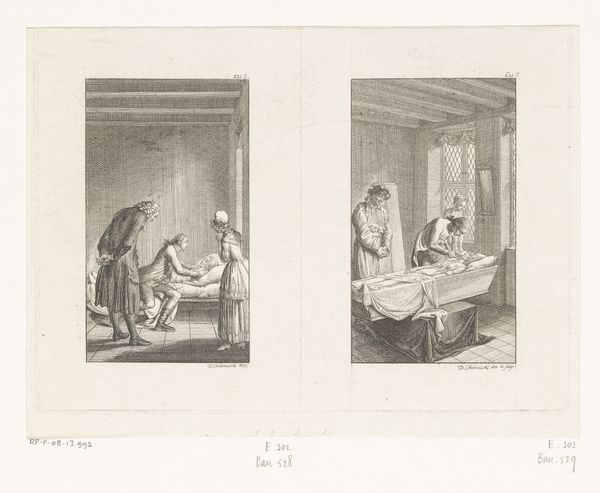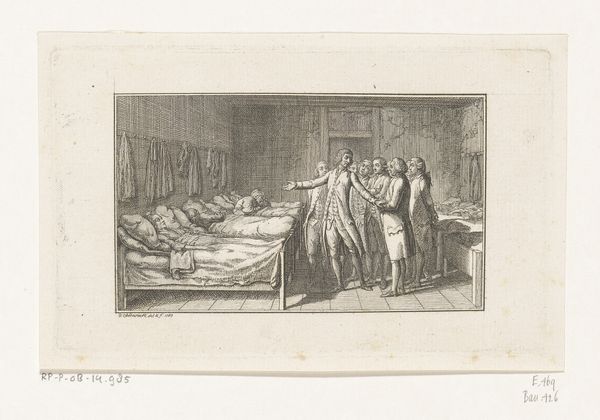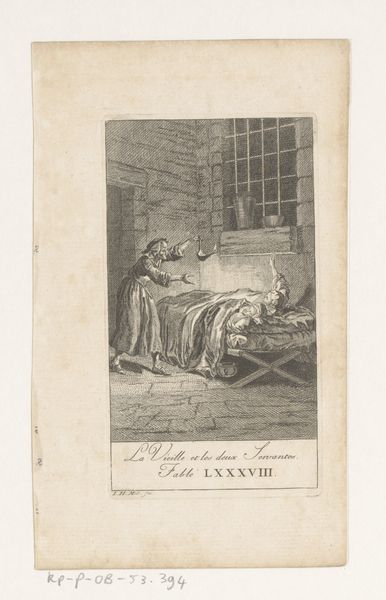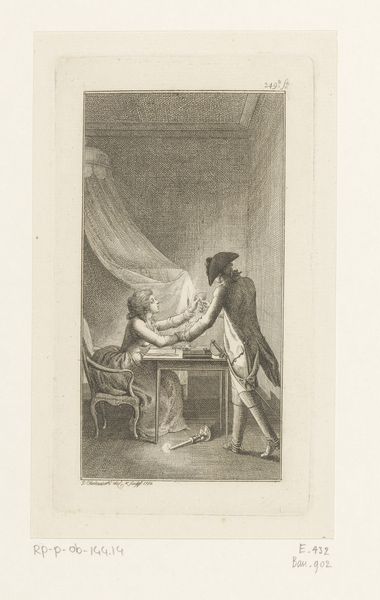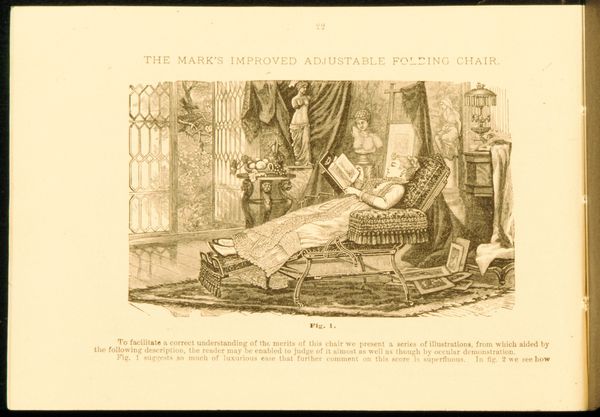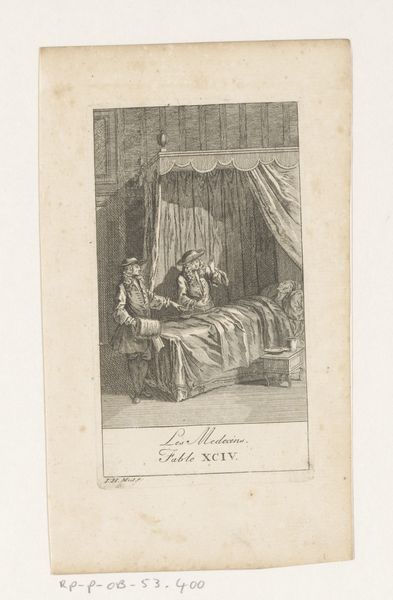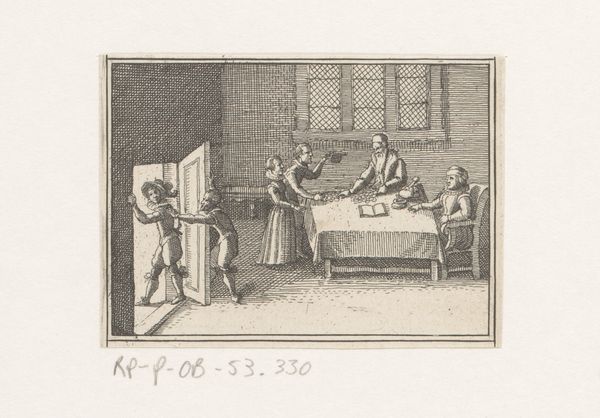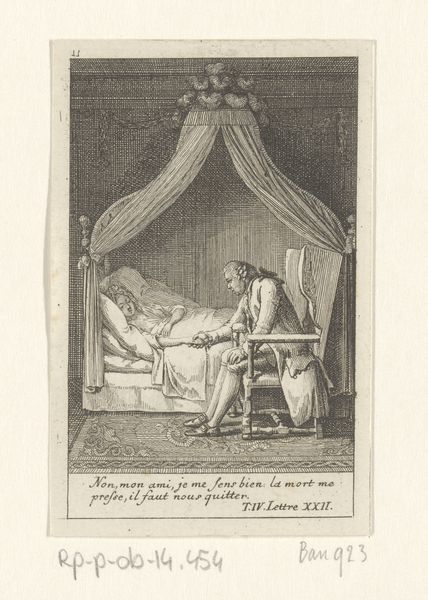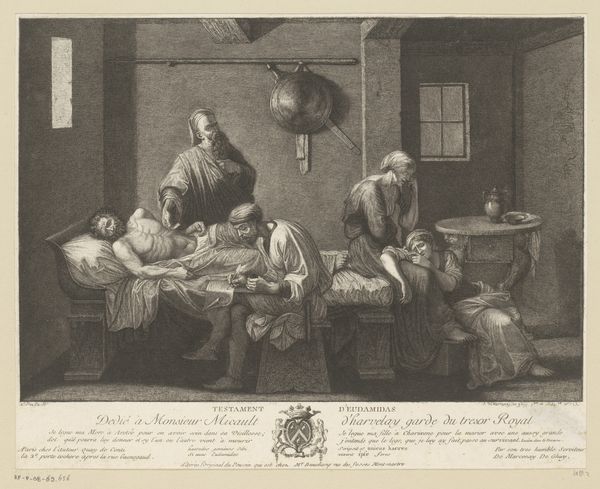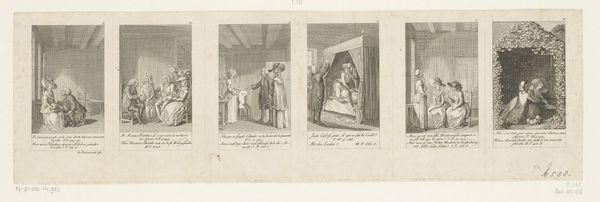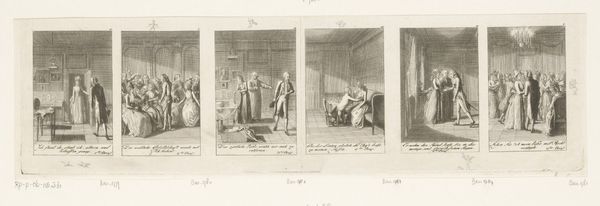
print, engraving
#
portrait
# print
#
genre-painting
#
history-painting
#
engraving
#
realism
Dimensions: height 114 mm, width 148 mm
Copyright: Rijks Museum: Open Domain
Curator: Let's examine "Tsaar Peter de Grote in de lakenwinkel van Noomen," an 1842 engraving. This print, housed in the Rijksmuseum, offers an interesting glimpse into historical narrative presented through… commercial activity. What strikes you initially about this image? Editor: The scene is set within what appears to be a linen shop; two figures are observing the materials. How does the material aspect inform your understanding of this image? Curator: Excellent observation. It's not just about *who* is depicted – Tsar Peter – but *where* he is: deeply engaged in the selection of fabric. What does the material of "laken," or linen, signify in this context? Its production, trade, and even its dyeing represented a vast network of labour and resources. To show the Tsar interested in these things, points to Dutch artistry. How might we read the stacks of linens within the broader economic system? Editor: It speaks to both industry and potential class differences, if some people could purchase these beautiful fabrics and others could not. Also the role of "craft" as both work and an art in its own right? Curator: Precisely! Before industrialisation, linen production involved skilled artisans – weavers, dyers, merchants. Consider how prints like this, relatively accessible forms of visual media, circulated ideas about labour and consumption. Did the artist perhaps think about how his artwork would be consumed by the public? Editor: I hadn’t considered the artist's labour in that sense – that prints themselves become part of a network of consumption and circulation. This perspective reframes my entire view of this piece! Curator: Indeed! Seeing art as entangled with materials and labor opens us to deeper insights. Editor: It definitely moves beyond the surface and asks who is involved in its manufacture and sale, broadening art to make connections to society and commerce!
Comments
No comments
Be the first to comment and join the conversation on the ultimate creative platform.
